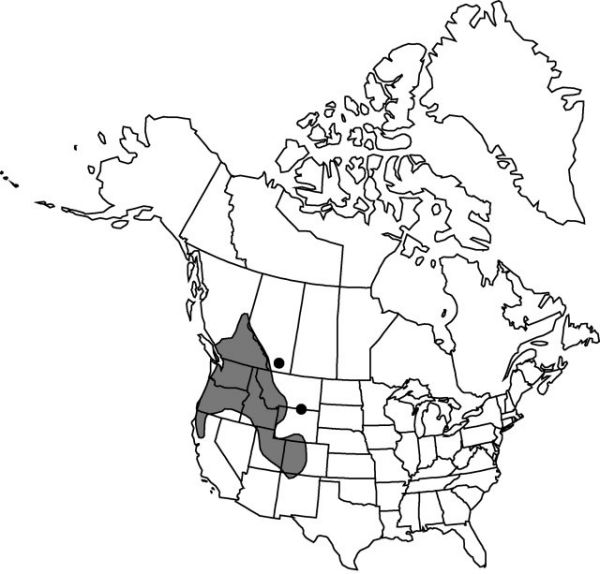Erythronium grandiflorum subsp. grandiflorum
Endemic
Synonyms: Erythronium giganteum Lindley Erythronium grandiflorum var. chrysandrum (Piper) Abrams Erythronium grandiflorum var. nudipetalum (Applegate) C. L. Hitchcock Erythronium grandiflorum var. pallidum H. St. John Erythronium nudipetalum Erythronium parviflorum
Treatment appears in FNA Volume 26. Treatment on page 156.
Revision as of 04:39, 30 July 2020 by imported>Volume Importer
Flowers: tepals bright-yellow, with narrow pale zone at base; anthers cream, yellow, red, or purplish red.
Phenology: Flowering spring–summer (Apr–Jul, depending on elevation).
Habitat: Widespread from lowlands to the subalpine, in open woodlands, grasslands, and subalpine meadows (where it is sometimes extremely abundant)
Elevation: 200–3100 m
Distribution

Alta., B.C., Calif., Colo., Idaho, Mont., N.Mex., Oreg., Utah, Wash., Wyo.
Discussion
Selected References
None.
Lower Taxa
None.
"broad" is not a number."thicker" is not a number.
... more about "Erythronium grandiflorum subsp. grandiflorum"
basifixed +
loculicidal +
appressed +
petiolate +
sheathing +
herbaceous +
yellow +
narrowed +
green +
glaucous +
lanceolate +
narrow +
absent +
1;several +
additional +
solid +
vertical +
fleshy +
white +
slender +
showy +
single +
capsular +
erect +
Widespread from lowlands to the subalpine, in open woodlands, grasslands, and subalpine meadows (where it is sometimes extremely abundant) +
racemose +
auriculate +
simple +
persistent +
recurved +
? (?) +
wavy +
(2-)3(-4)-locular +
superior +
many;several +
showy +
Fl. Amer. Sept. +
1814 +
persistent +
elongating +
wind-distributed +
angular +
brown +
ovoid +
attached +
beadlike +
small +
Endemic +
flowering +
more sparingly without than those extensive vegetative reproduction +
staminodial +
fertile +
capitate +
distinct +
white +
attached +
Erythronium grandiflorum subsp. grandiflorum +
Erythronium grandiflorum +
subspecies +
bright-yellow +
distinct +
absent +
recurved +
ovate +
greener +
equal +
narrower +
colors +
lanceolate;ovate +
scapose +
perennial +
woody +
pale +
narrow +